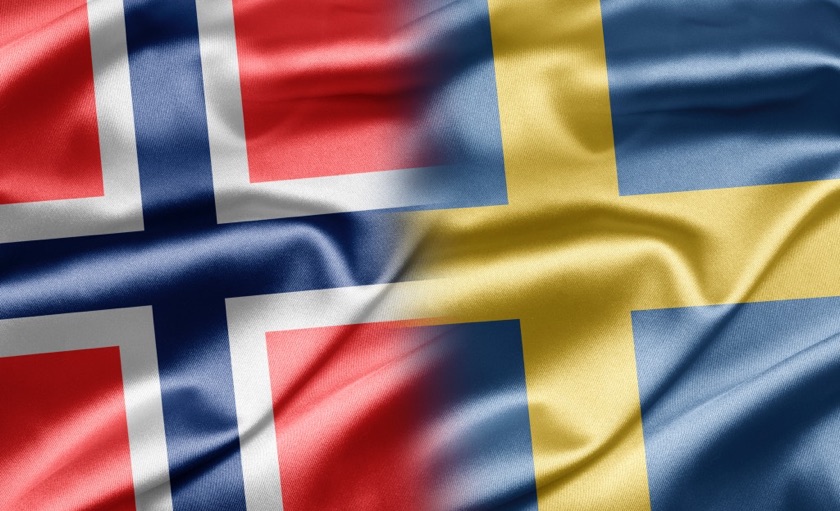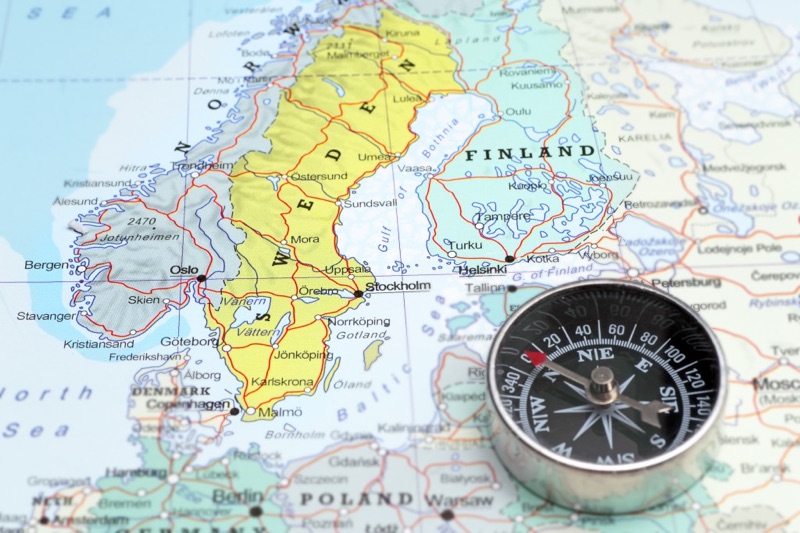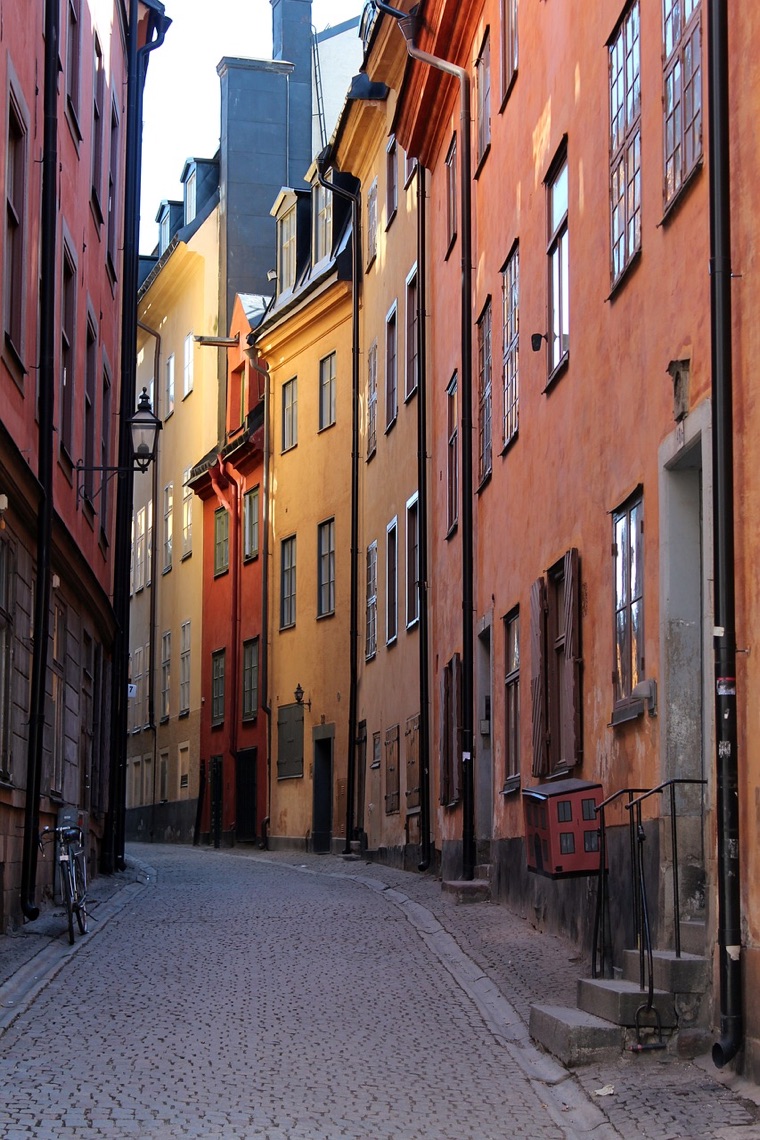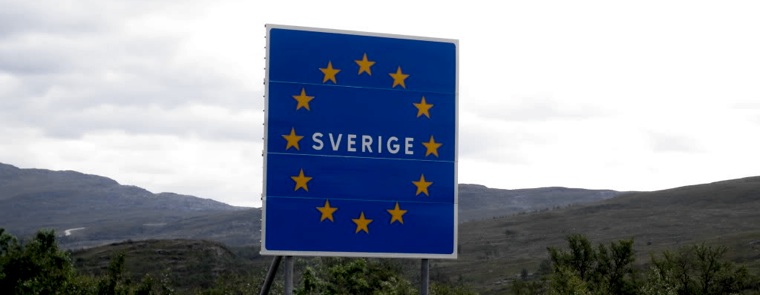
Irish border after Brexit: an expert on Norway-Sweden explains how to keep things smooth.
In the north-western corner of Europe, cross-border mobility and trade is flourishing between Norway and Sweden.
More than 25,000 people commute to work over the border, and the countries are among each other’s most important trade partners. One is an EU member; the other is not.
The efficiency and smooth running of the border may therefore seem surprising. The explanation lies in a combination of cultural preconditions and legal arrangements between the two countries.
The question then arises: could these Norwegian-Swedish border arrangements serve as a model for other parts of Europe, such as post-Brexit Ireland?
A shared past
Norway and Sweden have large cultural similarities, including each being able to understand the other’s language. The countries were even united between 1814 and 1905. Even though this union was dissolved, the countries continued to cooperate and have shared laws.
In the 1950s, they entered a passport union together with the other Nordic states Denmark, Finland and Iceland, which allowed ID-free travel between these countries.

Norway and Sweden thus have close ties, characterised by a high degree of trust. This is indicated by the fact that several of the border crossings in the sparsely populated areas along the 1,630km long border are unattended.
This tradition of cooperation forms the base for the work of the Nordic Council of Ministers, where Sweden, Norway, Denmark, Iceland and Finland work together on a wide range of policies.
Within this framework, the countries have agreed on how to simplify matters for people moving across their borders.
All Nordic citizens can freely live, study or work in any of the countries – you just have to register upon arrival. You will then get a civil registration number, which gives you access to the many social services available in the these highly regulated welfare states.

The accession to the EU by some of the countries, including Sweden, has somewhat limited the scope for formal Nordic agreements. Still, this form of cooperation is an arena for identifying and solving problems.
Importantly, the Nordic cooperation includes not only the level of governments and ministers, but also working groups and expert panels on lower levels.
This means that Norwegian and Swedish civil servants may establish contacts and simple ways of communication to solve problems, and thus establish a certain level of mutual confidence.
The EU connection
Even though cooperation within the Nordic framework is important, the decisive factor for the success of Norwegian-Swedish cross-border movement is undoubtedly the European Economic Area (EEA) treaty.
This agreement between the EU and Norway (as well as Iceland and Liechtenstein) means that Norway is connected to the EU common market.

Norway can trade most goods with its EU neighbours, without customs duties being levied. There are, however, some exceptions, such as agricultural products and food.
Norway has also adopted EU legislation on coordination of social security, so that that people who move or commute between it and the EU qualify for benefits in case of unemployment or illness.
In spite of not being an EU country, Norway has even joined the Schengen Agreement on abolishing border controls. In this way, the free movement between Norway and Sweden that has existed since the 1950s has been retained and reinforced by European cooperation.
Solving the border issues
Of course, there are occasional problems for cross-border mobility between the countries. For example, people who move between Norway and Sweden may not always know which country to turn to when it comes to taxation or social security.
People and businesses that move across the border may also occasionally experience disadvantages. Examples include delayed decisions on unemployment benefits for former cross-border commuters.
However, the Nordic cooperation on various levels provides a forum for discussing and solving problems relating to administrative practices or national legislation.
To help citizens and companies, Norwegian and Swedish authorities have set up a cross-border service, which provides information and advice on what to consider when working or doing business in the other country.
In this way, many problems may be solved by informal and pragmatic low-level cooperation between Swedish and Norwegian authorities.

The importance of the EEA treaty
The success of Norwegian-Swedish cross-border mobility may thus be explained by a combination of cultural features, including a high degree of mutual trust – and legal arrangements. The importance of the EEA treaty cannot be overlooked.
Without an overarching arrangement of this kind, cross-border movement would probably be much more difficult.
As a complement, the Nordic cooperation plays an important role, as it provides mechanisms for discussing and solving problems in a pragmatic way.
Not a solution for the UK
Given the historical differences, the relation between Norway and Sweden cannot, of course, be directly transferred to Ireland or other parts of Europe.
It does indicate, however, that extensive legal cooperation, problem solving mechanisms on different levels and mutual trust are key features of successful cross-border mobility. This could be applied in other parts of Europe on the EU border.

This article was written by , Associate Professor in Public Law at Lund University, and originally published on The Conversation. He worked for the Nordic Council of Ministers in 2009 and 2010, investigating border barriers between the Nordic states.


I am planning on visiting sweden from England and from sweden straight to Norway, can I pass through with just a passport?
Depending on how you are travelling you probably won’t even need to show your passport
i lived in Norway both in the 1980s, and also in the 1990s, and there was never a hard border between Norway and Sweden, nor between Norway and Denmark. Given that history, there is no reason why there need be any hard border between Northern Ireland and Southern Ireland.
The claim that there needs to be such a hard border is simply a ruse to make leaving the EU appear more difficult than it needs to be.
Richard Verney – kindly read a book on the history of Ireland before making such uninformed comments.
Why can’t British politicians and EU representatives learn, or do they have an alternative agenda?
Why are there no more night trains between Sweden and norge
A lot of Norwegians cross into Sweden to do their grocery shopping; meat, for example, is said to be cheaper in Sweden, and also booze, I think there are limits on how much they may bring back to Norway. And apparently smuggling goes on (ok I got the latter from the TV series, Lillehamar…LOL).
I live in Norway and regularly travel to Sweden to do some grocery shopping. There is a physical customs post – a hard border – but most times a private person will not be stopped. Lorries are checked and about twice a year private cars are stopped to check the amounts of alcohol, tobacco or meat are not being exceeded. Each time a stop is imposed for a day a lot of people end up having to pay extra duty. Whilst the border is not in anyway a burden, a hard border does exist and the infrastructure is exactly what N Ireland and the Republic are trying to avoid